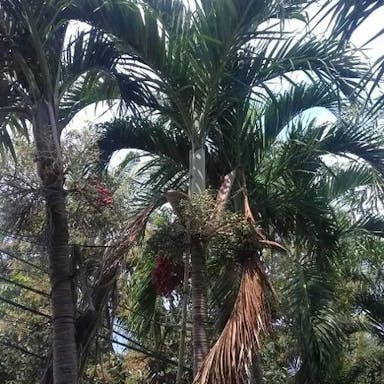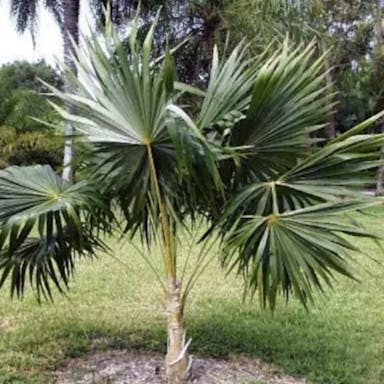Cascade palm, scientifically known as Chamaedorea cataractarum, is a popular ornamental plant characterized by its delicate, arching fronds and slender stems. The Mexican native produces small, inconspicuous flowers that are typically yellow or green in color. Its name refers to the resemblance of its foliage to a waterfall. This plant belongs to the Arecaceae family and is a type of palm known for its graceful appearance. They are relatively easy to grow, requiring indirect sunlight and regular watering to maintain their lush green appearance. Cascade palms are a popular choice for indoor decoration due to their elegant foliage and low maintenance requirements. The plant thrives in the tropical rainforests understory. Cascade palms do not produce edible fruits and typically grow to a moderate height. It is native to Mexico and Guatemala, where it grows well in the forest understory. The palm has delicate, arching fronds and slender stems, giving it a graceful, elegant appearance. Its small greenish-yellow flowers are inconspicuous. Regular watering and indirect light help keep the fronds lush and green. Being relatively easy to care for makes cascade palms popular for indoor decoration. Their graceful shapes and foliage add beauty without requiring much work. Cascade palms grow to about 4-6 feet tall, remaining a reasonable size for indoor spaces.
0
0







